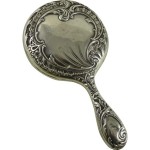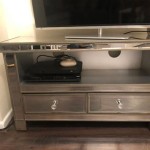How To Mirror Screen With HDMI
High-Definition Multimedia Interface (HDMI) has become a ubiquitous standard for transmitting high-quality audio and video signals between devices. One of its most common applications is screen mirroring, which allows users to display the content of one device, such as a laptop, smartphone, or tablet, onto a larger screen like a television, monitor, or projector. This capability is valuable for various purposes, including presentations, entertainment, collaborative work, and improving accessibility. Screen mirroring with HDMI provides a direct, wired connection, often resulting in a more stable and higher-quality display compared to wireless options. This article will detail the process of mirroring a screen using HDMI, addressing the necessary hardware, setup procedures, and troubleshooting techniques.
Before initiating the screen mirroring process, it is essential to understand the fundamental principles of HDMI technology. HDMI transmits uncompressed digital data, facilitating a clear and sharp image quality. The HDMI cable carries both audio and video signals, simplifying the connection process by requiring only a single cable. Different versions of HDMI exist, each supporting varying resolutions, refresh rates, and features. Most modern devices utilize HDMI 1.4 or later, which supports 4K resolution and other advanced functionalities. It is important to ensure that the HDMI cable and devices are compatible to achieve optimal performance. Using an older HDMI cable with newer devices might limit the resolution or refresh rate capabilities.
The physical ports for HDMI connections are also standardized, primarily using three types: standard (Type A), mini (Type C), and micro (Type D). Standard HDMI ports are the most common and are typically found on televisions, monitors, and laptops. Mini-HDMI ports are smaller and often found on camcorders and some older laptops. Micro-HDMI ports are even smaller and are commonly used on smartphones and tablets. When mirroring a screen, it is crucial to identify the correct port type on each device and use an appropriate cable or adapter to connect them. Using the wrong type of connector can cause damage to the ports or prevent the connection from working altogether.
The process of screen mirroring via HDMI can be generally divided into three key steps: identifying compatible devices and hardware, configuring the display settings on the source device, and addressing common connectivity issues. Each of these steps warrants careful attention to ensure a successful and efficient screen mirroring experience.
Identifying Compatible Devices and Hardware
The first step in mirroring a screen with HDMI is to confirm the compatibility of the devices involved. This entails verifying that both the source device (e.g., laptop, smartphone) and the display device (e.g., television, monitor) have functional HDMI ports. It is equally important to ensure that the correct type of HDMI cable is available. As mentioned earlier, different types of HDMI ports require specific cables or adapters. If the source and display devices have different HDMI port types, an appropriate adapter will be necessary to bridge the connection.
For instance, if a user intends to mirror the screen of a smartphone with a Micro-HDMI port to a television with a standard HDMI port, a Micro-HDMI to HDMI cable or a Micro-HDMI to HDMI adapter coupled with a standard HDMI cable will be required. The presence of the correct ports is a prerequisite for establishing the physical connection needed for screen mirroring. Inspecting both devices for visible port damage is also recommended. A bent pin or damaged port might prevent a proper connection, even with the correct cable.
Beyond physical ports, users should also check the technical specifications of both devices to ascertain that they support the desired resolution and refresh rate. If the display device only supports a maximum resolution of 1080p, mirroring a 4K signal from the source device will result in downscaling, potentially impacting visual quality. Similarly, if the source device outputs a refresh rate that the display device cannot handle, the screen might exhibit flickering or other visual artifacts. Therefore, understanding the technical capabilities of both devices is crucial for achieving optimal screen mirroring performance.
Finally, it is advisable to test the HDMI cable before initiating the mirroring process. A faulty or damaged HDMI cable can cause a variety of issues, including a blank screen, distorted images, or intermittent signal loss. Connecting the cable to two known working devices to check its functionality is a simple yet effective way to rule out potential hardware problems. If the cable exhibits any issues during testing, replacing it with a new one is recommended.
Configuring Display Settings on the Source Device
Once the physical connection between the source and display devices is established via HDMI, the next critical step involves configuring the display settings on the source device. This process ensures that the video signal is properly transmitted to the external display and that the screen mirroring functionality is activated. The specific steps for configuring display settings can vary depending on the operating system and the device being used. However, the underlying principles remain consistent across different platforms.
For laptops running Windows, the display settings can usually be accessed by right-clicking on the desktop and selecting "Display settings." Within the display settings menu, users can configure multiple monitors, choose to duplicate or extend the display, and adjust the resolution and orientation of the external monitor. To mirror the screen, the "Duplicate these displays" option should be selected. This option ensures that the same content is displayed on both the laptop screen and the external display. Additionally, users can adjust the resolution of the external display to match the native resolution of the television or monitor for optimal image quality.
On macOS devices, display settings can be accessed through the "System Preferences" menu, followed by selecting "Displays." In the displays settings, users can find options to arrange displays, mirror displays, and adjust resolution and refresh rate. To initiate screen mirroring, the "Mirror Displays" checkbox should be selected. Similar to Windows, macOS also allows users to configure the resolution of the external display to match its native resolution. Furthermore, macOS provides options for color calibration and brightness adjustment, allowing users to fine-tune the display settings for optimal viewing experience.
Smartphones and tablets typically have simpler screen mirroring configuration options. On Android devices, the process often involves accessing the "Display" or "Connected Devices" settings menu and selecting the HDMI output or screen mirroring option. The exact wording and location of these settings may vary depending on the manufacturer and Android version. On iOS devices, screen mirroring via HDMI usually requires a Lightning to HDMI adapter. Once the adapter is connected, the device should automatically detect the external display, and the screen will be mirrored. In some cases, users might need to adjust the display settings within the iOS settings menu to optimize the output resolution.
Regardless of the operating system, it is crucial to ensure that the source device is outputting the correct resolution and refresh rate for the external display. Mismatched resolutions or refresh rates can lead to distorted images, flickering, or a blank screen. If issues arise, experimenting with different display settings is recommended until a stable and clear image is achieved.
Addressing Common Connectivity Issues
Despite following the correct procedures for identifying compatible devices, connecting the hardware, and configuring display settings, users might still encounter connectivity issues when attempting to mirror a screen with HDMI. Addressing these issues requires a systematic approach, starting with basic troubleshooting steps and progressing to more advanced techniques if necessary.
One of the most common issues is a lack of signal detection. If the external display does not recognize the HDMI input from the source device, the first step is to verify that the HDMI cable is securely connected to both devices. A loose connection can prevent the signal from being transmitted properly. It is also advisable to try a different HDMI port on the display device. Some televisions and monitors have multiple HDMI ports, and one port might be malfunctioning or have a different configuration. Power cycling both devices – turning them off and then back on – can also resolve temporary glitches that might be preventing the connection.
Another frequent problem is incorrect resolution settings. If the image appears distorted, stretched, or blurry, it is likely that the resolution settings on the source device do not match the native resolution of the external display. As previously mentioned, adjusting the display settings to match the native resolution of the television or monitor is crucial for achieving optimal image quality. Experimenting with different resolution settings can help identify the correct configuration. For example, setting the resolution to 1920x1080 (1080p) is often a good starting point.
If the audio is not being transmitted through the HDMI connection, the audio output settings on the source device might need to be adjusted. In Windows, the audio output device can be selected through the sound settings in the control panel. On macOS, the audio output device can be selected in the sound settings within System Preferences. It is important to ensure that the HDMI output is selected as the audio output device. If the HDMI output is not listed, updating the audio drivers might be necessary. On smartphones and tablets, the audio output settings are typically configured automatically when an HDMI connection is detected. However, users might need to manually select the HDMI output in the device's settings menu in some cases.
In rare instances, compatibility issues between the HDMI versions of the devices can cause connectivity problems. If the source device utilizes a newer HDMI version than the display device, or vice versa, certain features might not function correctly. While HDMI is generally backward compatible, using an older HDMI cable with newer devices can limit the supported resolution and refresh rate. In such situations, ensuring that both devices and the HDMI cable support the same HDMI version can resolve the issue.
If none of the above troubleshooting steps resolve the connectivity problems, it might be necessary to update the device drivers or firmware. Outdated drivers or firmware can cause compatibility issues and prevent proper screen mirroring functionality. The process for updating drivers and firmware varies depending on the device manufacturer and operating system. Consulting the device's user manual or visiting the manufacturer's website for instructions is recommended.
By systematically addressing these common connectivity issues, users can often successfully mirror their screens with HDMI and enjoy a seamless display experience. Patience and a methodical approach are key to resolving these types of technical challenges.

Hdmi Mirrorbox Hardware That Flips Your Screen To A Mirror Image

How To Mirror Your Screen From A Mobile Device Tv With Usb Hdmi Adapter

How To Screen Mirror Android Devices Hdmi Port Or Rca Av Inputs

How To Mirror Your Android Phone Tv Via Hdmi Cable Cablecreation

Usb To Hdmi On Any Android Phone Screen Mirror Your Monitor Or Tv

4 Simple Ways To Mirror Phone Screen Without Wifi

How To Screen Mirror From Your Samsung Phone Using Hdmi

Ugreen Wireless Hdmi Screen Mirror For Iphone Android To Tv Digitec

How To Screen Mirror Your Phone Using Drong App Featured S Services

Wifi Wireless Hdmi Mirror Screen Display Adapter For 1080p Tv Spayvac Com








